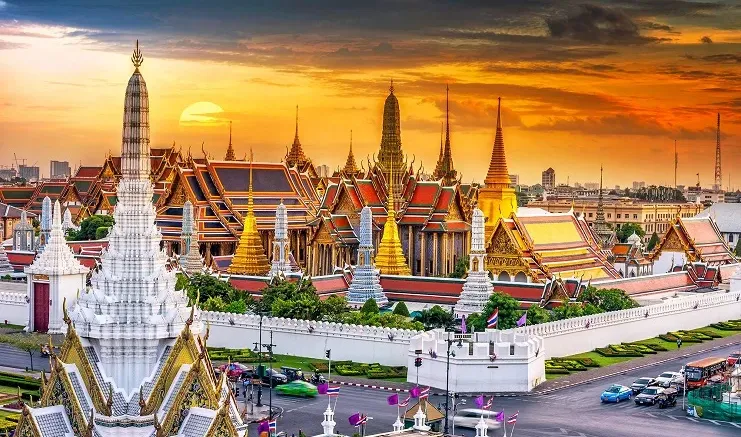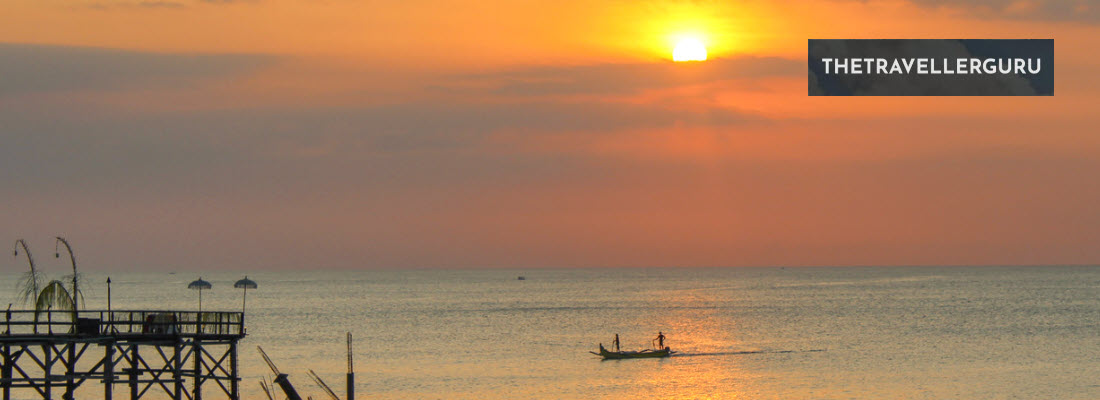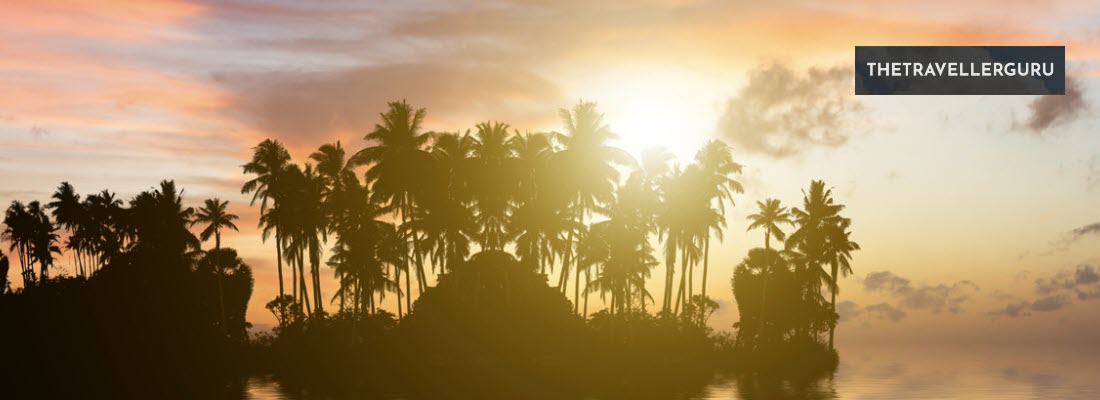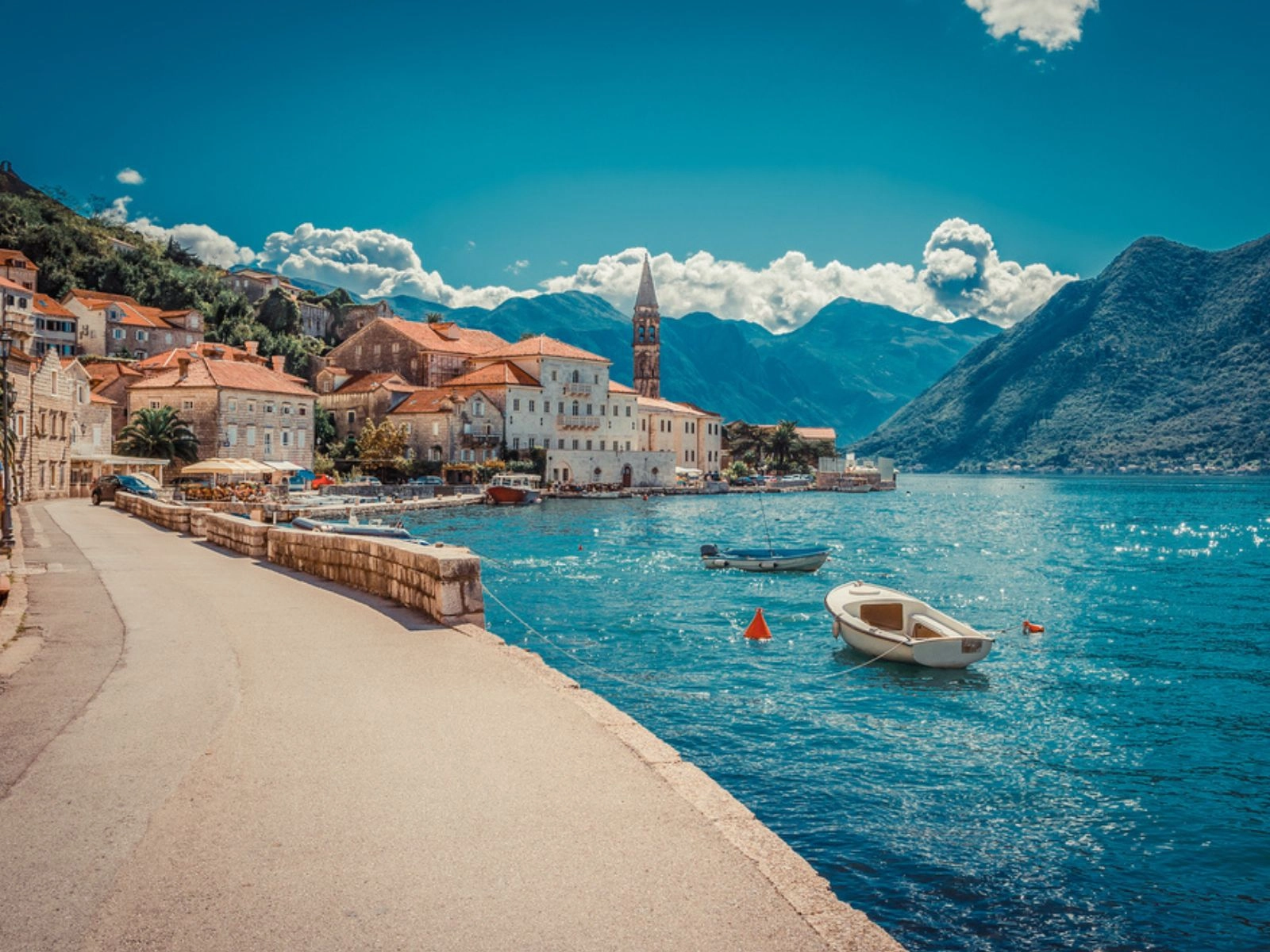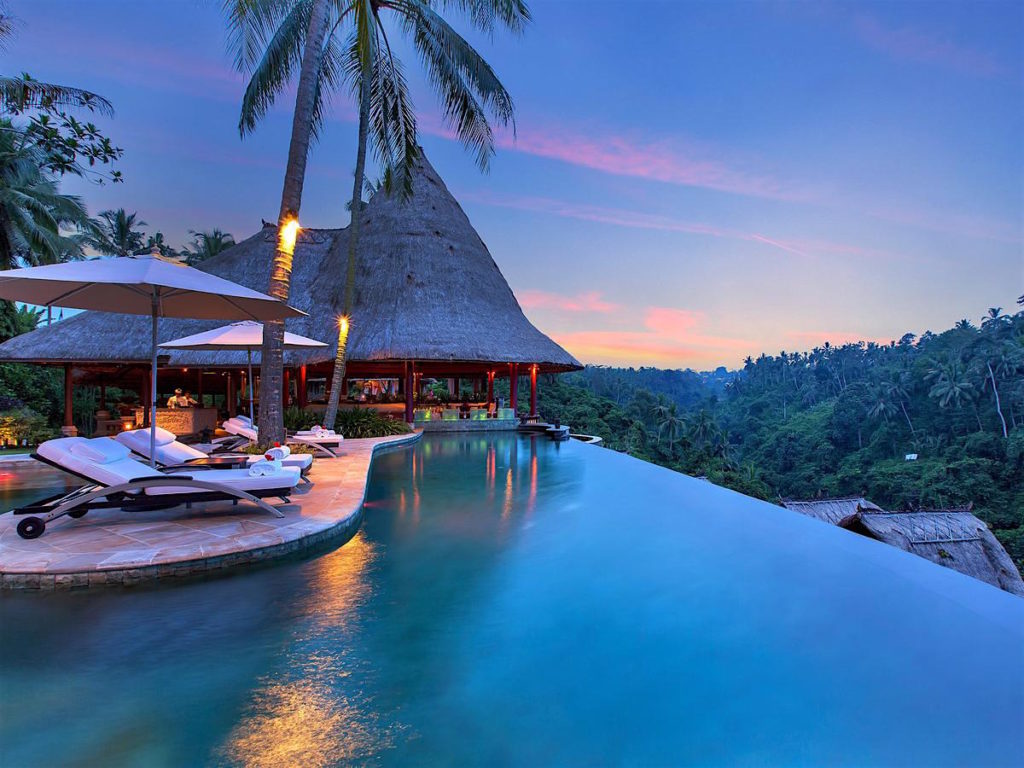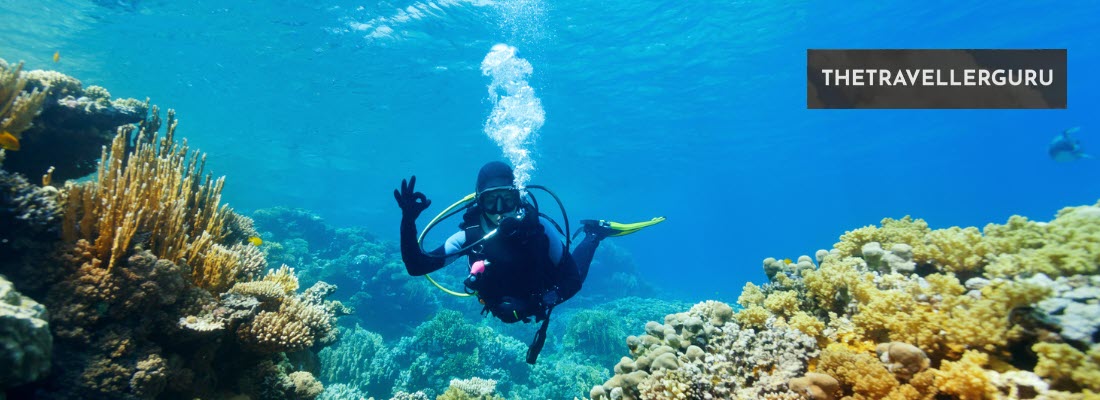Hey there my fellow Bali enthusiasts and welcome to my post where we will check out my 10 best surf beaches in Bali to hang ten on this year. As we know, Bali is a popular tourist destination for those looking to do some shopping, sit by the pool or hit up their favorite beach club.
And whilst these are all fun, Bali has also earned its reputation as one of the top surfing destinations on the planet. Whether you’re an experienced surfer seeking the thrill of a perfect barrel or a beginner looking to catch your first wave, Bali’s surf spots have something for everyone.
- Uluwatu
- Padang Padang
- Bingin Beach
- Balangan Beach
- Impossibles
- Keramas
- Medewi
- Canggu
- Green Bowl Beach
- Nusa Lembongan
Best Surf Spots Bali Map
Use this map to identify the locations of the best places to catch a wave in Bali listed below:
10 Best Surf Beaches In Bali
So, let’s dive in and explore the best surf beaches that Bali has to offer.
1. Uluwatu
Uluwatu, located on the southwestern tip of the Bukit Peninsula, is one of Bali’s most iconic surf spots. The name “Uluwatu” stems from the local language, where “ulu” means “land’s end” and “watu” means “rock”, referencing the dramatic cliff landscapes that serve as a backdrop to this spectacular surf spot.
Uluwatu is known for its consistent waves that can cater to a variety of surfing levels, although it’s especially famous among advanced surfers. The surf spot is divided into several different sections, each with its unique characteristics. These sections include:
- Temples – The furthest up the reef, Temples is a more secluded section that often provides powerful, fast-breaking waves that are favored by more experienced surfers.
- The Peak – True to its name, The Peak is often the first to start working when the swell picks up. It breaks both left and right, offering plenty of opportunities for surfers.
- Racetracks – This is an extremely fast section that works best during mid to low tide. When the conditions are right, it offers long and thrilling rides.
- Outside Corner – This is the most famous section of Uluwatu and only starts working properly with larger swells. During a big swell, the waves here can provide some of the most epic rides in Bali.
One of Uluwatu’s key features is the stunning 11th-century Hindu temple, Pura Luhur Uluwatu, perched on the edge of the cliff. This offers surfers a unique combination of natural beauty, cultural richness and thrilling wave rides.
Getting to the lineup involves a descent into a cave and a paddle out through a keyhole in the reef. This might be intimidating for beginners, but the spectacular scenery and the surf experience make the effort worthwhile.
On land, there’s a vibrant surf scene with plenty of surf shops, cafes, restaurants and accommodations overlooking the surf break where you can watch the action unfold. There are also local warungs (small family-owned businesses, often cafes or restaurants) at the edge of the cliff where you can enjoy a post-surf meal while watching the sunset.
Always remember, while Uluwatu is breathtakingly beautiful, it can also be very challenging and unpredictable due to its powerful waves, strong currents, and sharp reef. Therefore, it is crucial to understand your limits, respect the ocean, and observe the rules of surfing etiquette for your safety and the safety of others.
Check out my: 10 Best Beaches in Bali
2. Padang Padang
Padang Padang, located on the Bukit Peninsula in Bali, Indonesia, is one of the island’s most famous surf spots. This beautiful beach, also known as the Balinese Pipeline, offers one of the most challenging left-hand barrels in the world, attracting experienced surfers from all corners of the globe.
The break at Padang Padang is renowned for its high, fast and powerful waves that peel perfectly over a shallow coral reef. The waves are best at high tide, and when the conditions align, they can offer long, thrilling rides. This spot really comes alive with a solid southwest swell and wind conditions from the east.
Padang Padang is divided into two main surfing areas:
- Padang Padang Rights – Also known as “Baby Padang,” this area is on the right side of the beach and is perfect for beginners and intermediate surfers. The sandy bottom and smaller, gentler waves make it a great place to learn and improve your surfing skills.
- Padang Padang Left – This is the main attraction for advanced surfers. When the swell is big enough, the left break offers a fast, powerful and hollow wave that can provide an epic barrel ride. However, the sharp reef below the surface can make this a risky endeavor for the unprepared, so this area is recommended only for experienced surfers.
Access to the water at Padang Padang involves walking down a set of steps and through a limestone cave, which adds to the unique charm of this location.
In addition to its reputation as a surfing hotspot, Padang Padang Beach has also gained international fame as a film location – most notably in the 2010 movie “Eat, Pray, Love” starring Julia Roberts. The beach’s white sands, clear waters, and lush greenery make it an idyllic spot for sunbathing and swimming when the tide is low.
And to top it all off, every year Padang Padang also hosts the Rip Curl Cup Invitational, one of the most prestigious surfing competitions in Indonesia. This event attracts top surfers from around the world and is a testament to the quality of the waves found at this beach.
Check out my post: Where did they shoot Ticket to Paradise? And how to get there.
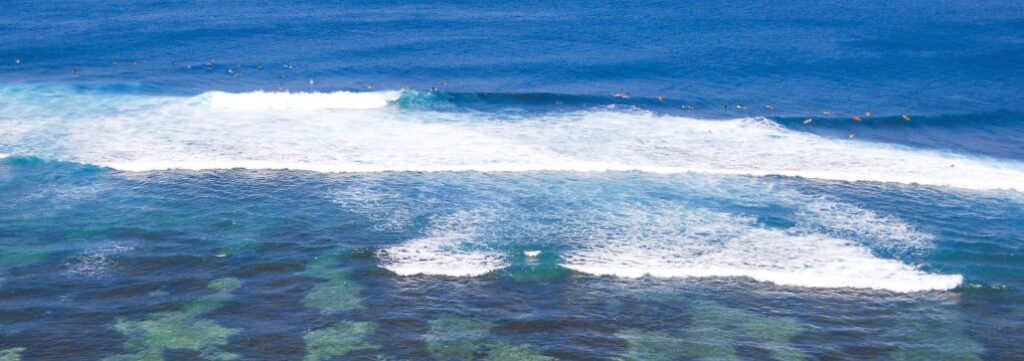
3. Bingin Beach
Tucked away on the Bukit Peninsula, Bingin Beach is one of Bali’s hidden gems and home to some of the best waves on the island, making it a beloved destination for surfers worldwide. The beach offers a fast and powerful left-hander that breaks over a shallow coral reef, delivering consistent barrels.
While it’s an excellent spot for advanced surfers who enjoy challenging, fast-paced rides, it may not be suitable for beginners due to its sharp reef and powerful wave conditions. Here’s what you need to know about the main sections of Bingin’s break:
- Outside Bingin – This section works best with bigger swells. When it’s working, it provides bigger, more powerful waves.
- Bingin’s Main Peak – This is the most popular section. The wave here is quick, shallow and hollow, offering great barrels when conditions are right.
- Inside Corner – This section is the last part of the wave and is less powerful. It offers a short, fun ride for those who can avoid the rocks.
One of the best aspects of Bingin Beach is that it’s less crowded than its neighboring surf spots like Uluwatu and Padang Padang, offering a more laid-back and intimate experience. Plus, the sunsets here are truly unforgettable.
Access to Bingin Beach involves a descent down a cliff, so be prepared for a bit of a hike. The surrounding area has a small, close-knit community vibe with local warungs (small family-owned businesses), homestays and beachfront guesthouses that offer stunning views of the Indian Ocean.
It’s also a great place to enjoy a beach day, with beautiful white sand and clear waters that are perfect for swimming during high tide.
Despite its relaxed vibe, Bingin Beach demands respect from its surfers. The sharp, shallow reef can be dangerous, especially during low tide or bigger swells. As always, it’s essential to understand your abilities and respect the power of the ocean.
4. Balangan Beach
Nestled on the southern tip of Bali’s Bukit Peninsula, Balangan Beach is a treasure among surf enthusiasts. This long and scenic stretch of white sand and clear blue waters is surrounded by rocky cliffs and offers an unspoiled, tranquil beach vibe.
Surfing at Balangan Beach is a delight for intermediate and advanced surfers. Famous for its consistent left-hand reef break and long, rideable waves that can hold a good size, it is a popular spot when bigger swells hit the island. Here are a few specifics about the surf break:
- Outside Peak – This part of the wave breaks further out and is excellent for more experienced surfers, especially during a bigger swell. It offers long rides towards the inside section.
- Inside Section – This part breaks closer to the shore and can provide fun, rideable waves, perfect for intermediate surfers.
Balangan Beach is relatively less crowded compared to other popular surf spots like Uluwatu or Padang Padang, so it’s a great spot for those who want to enjoy their waves without too much company.
Access to the beach involves walking down a small path and some stairs, which adds to its charm. There are a variety of local warungs, cafes and beach shacks lining the beachfront, offering refreshments and meals where the grilled seafood is a local favorite.
Additionally, Balangan Beach is an amazing spot to relax and take in the beauty of the ocean. It’s a favorite among beachgoers for sunbathing, swimming (be cautious of the currents and reefs) and photography. It’s also one of the best spots in Bali to witness the magnificent sunsets. There’s also a scenic cliff-top golf course at New Kuta Golf, which is a short drive away.
Despite its beauty, Balangan Beach can be tricky for surfing beginners due to its reef bottom and potential for larger waves.

5. Impossibles
With a name that stems from the seemingly “impossible” task of surfing its long and fast waves, Impossibles, is an intriguing surf spot known for its challenging breaks. Located on the Bukit Peninsula, this spot offers a consistent left-hand reef break that works best with mid to high tide. Here are the specific sections of Impossibles:
- Outside Peak – The outside section usually breaks during larger swells and provides the longest rides when conditions align. The wave here is fast and hollow, offering thrilling barrels.
- Inside Peaks – These peaks break closer to the shore, still delivering powerful rides but on a smaller scale than the outside peak.
Impossibles is famous for its three take-off zones which, during a good swell, link up to form an extraordinarily long ride. However, the wave is extremely fast, making it difficult for surfers to make the sections and challenging them to maintain their speed.
Given the power and speed of the waves, this spot is typically suited for intermediate to advanced surfers. The sharp reef, strong currents, and size of the waves demand a high level of skill and experience.
Getting to the water at Impossibles involves a bit of a walk down the cliff and a paddle out to the lineup. The beautiful cliff-front views are a bonus, making the walk worthwhile. The surrounding area offers a range of accommodations from budget to luxury, all within walking distance to the beach. Additionally, there are several local warungs nearby where you can refuel after your surf session.
Like other surfing spots in Bali, it’s important to respect the power of the ocean at Impossibles. Due to its challenging breaks, surfers must ensure they’re well-equipped to handle the conditions and always follow surfing etiquette. If you’re up for the challenge, Impossibles can offer an unforgettable surfing experience.
6. Keramas
Keramas is a world-class surf spot situated on the east coast of Bali, just north of Sanur. This black sand beach offers some of the best waves on the island and is famous for its powerful right-hand reef break that delivers fast, barreling waves.
Keramas comes alive with a southeast swell and west to northwest wind, which are most common between April and October during the dry season. During these months, the offshore winds groom the waves into clean, fast tubes that are a delight for advanced surfers. Here’s what you need to know about the main sections of Keramas’ break:
- Outside Section – This part of the wave breaks further out and offers larger, more powerful rides. It’s excellent for experienced surfers, especially during a solid swell.
- Inside Section – Closer to the shore, this section still provides fast and steep waves. It’s generally smaller than the outside section but can deliver some great rides.
Getting in and out of the water at Keramas is relatively easy with a sandy beach entry and the line-up at can get crowded, especially when conditions are prime. A unique feature of this beach is the night surfing where thanks to installed floodlights, surfing after dark is possible, adding an exciting twist to the experience.
It is also an internationally renowned spot that has hosted numerous professional surf competitions, including World Surf League events.
Onshore, there’s the Komune Resort and Beach Club, which provides excellent accommodations, a swimming pool, a restaurant and a fantastic view of the surf break. Visitors can enjoy watching the surf action from the comfort of their beach chairs, even at night.

7. Medewi
Medewi is a laid-back surf spot located on the west coast of Bali, approximately a three-hour drive from the more crowded southern part of the island. The beach is known for its rocky pebble bottom and black sand and provides a quieter, more relaxed surfing experience compared to some of Bali’s busier surf locations.
The standout feature of Medewi is its long, left-hand point break which is one of the longest in Bali. This break is characterized by its slow-rolling waves, making it an ideal spot for intermediate surfers or longboarders who enjoy a longer ride. However, when the swell picks up, it can also offer more challenging waves suitable for advanced surfers.
There are two primary sections of Medewi’s break:
- The Point – This is where most surfers congregate. The waves here are slower and more mellow, perfect for those looking to improve their surfing skills or simply enjoy a relaxed surf.
- Down the Point – This section picks up more swell and offers faster, steeper waves providing a bit more of a challenge.
Medewi is less crowded than many of the surf spots on the Bukit Peninsula or in Canggu which adds to its appeal. The locals are friendly, and the lineup is often shared with local kids who are always ready to share a smile.
The beach is surrounded by a rural landscape of rice paddies giving it a very serene feel and you can find several beachside warungs where you can enjoy local food and watch the waves. There’s also a range of accommodation options, from budget-friendly homestays to more comfortable villas.
8. Canggu
Canggu, situated on Bali’s southwest coast, is a vibrant hub for surfers, digital nomads and travelers alike. It’s famous for its lush rice fields, trendy cafes, vibrant nightlife and most importantly, its excellent surf breaks. The black sand beaches of Canggu stretch over several kilometers offering a variety of surf spots that cater to beginners, intermediates, and advanced surfers.
There are three main surf spots in Canggu:
- Echo Beach – The furthest north of the three main breaks, Echo Beach is known for its powerful right and left-hand reef breaks. When the swell aligns, this spot can deliver epic barrels making it most suitable for intermediate to advanced surfers due to its fast, powerful waves and sharp reef bottom.
- Batu Bolong – This is the most beginner-friendly break in Canggu. Batu Bolong features a sandy bottom and smaller, slower waves, making it a popular spot for surf schools and those new to the sport. But remember, while it’s more forgiving, it can get crowded as well.
- Berawa Beach – South of Batu Bolong, Berawa offers a mix of wave conditions suitable for a variety of skill levels. There are both right and left breaks over a sandy bottom with some reef. It’s usually less crowded than Batu Bolong, offering a more relaxed surf session.
The best time to surf in Canggu is during the dry season, from May to October, when the winds are offshore and the west coast of Bali enjoys consistent swells.
Canggu isn’t just about surfing and post-surf, you can enjoy an array of trendy restaurants, cafes and juice bars that line the roads and rice fields. There are also many yoga studios, boutique shops, and beach clubs like the famous Finn’s Beach Club.
Check out my post on: Seminyak vs Canggu: Beach Clubs or Beach Surfing?
Accommodation in Canggu ranges from beachfront villas and luxury resorts to budget-friendly guesthouses and hostels, catering to a broad spectrum of visitors.
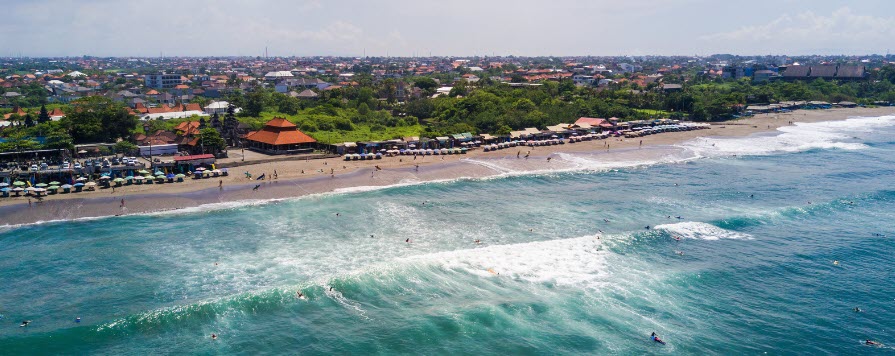
9. Green Bowl Beach
Green Bowl Beach, on the southern tip of Bali’s Bukit Peninsula, is one of the island’s hidden treasures and known for its serene beauty and challenging surf. It’s less frequented than other popular Bali surf beaches, providing a quieter, more secluded experience.
Surfing at Green Bowl Beach is a delight for experienced surfers due to its powerful, fast, right-hand reef break. The waves break close to the shore and offer exciting barrels when the conditions are right. It works best with a high tide and a southwest swell, making it an excellent option during the dry season, typically from May to September.
Reaching the beach involves descending about 300 steep steps from the clifftop, which might be strenuous for some but also helps keep the crowds away. Be prepared for a hike, especially on the way back up, but know that the effort is well worth it once you reach the pristine beach.
Green Bowl is a relatively small beach, and at low tide, it reveals limestone caves at the base of the cliffs where you can seek shade and enjoy the view. Besides surfing, it’s also great for sunbathing, picnicking, or simply relaxing.
Amenities are limited at Green Bowl due to its remote location, so it’s wise to bring your own food, water and other essentials. While accommodation isn’t available directly on Green Bowl Beach, there are plenty of options available in the nearby Ungasan area, ranging from budget guesthouses to luxury clifftop villies.
For those looking for an off-the-beaten-path surf spot away from the crowds, Green Bowl Beach is a fantastic option.
10. Nusa Lembongan
And last but not least, there is Nusa Lembongan. This is a small island located southeast of Bali, known for its clear waters, abundant marine life and quality surf breaks. The island is a part of a group of three islands – Nusa Penida, Nusa Lembongan, and Nusa Ceningan – and is easily accessible from Bali by speedboat.
The surfing on Nusa Lembongan is excellent, with several breaks that cater to different levels of experience:
- Shipwrecks – Named after an old shipwreck visible at low tide, this is the most famous break on Nusa Lembongan, renowned for its right-hand reef break. With the right swell direction, it can offer long, perfect waves suitable for intermediate to advanced surfers.
- Lacerations – Located near Shipwrecks, Lacerations gets its name from the sharp reef below the surface. It’s a fast, hollow right-hander that can offer thrilling barrels, suited to advanced surfers.
- Playgrounds – This break is more suitable for beginners and intermediate surfers. Playgrounds offer both left and right peaks over a deeper reef, providing a more forgiving ride compared to Shipwrecks and Lacerations.
The best time to surf on Nusa Lembongan is during the dry season, from May to September, when the southeast trade winds blow offshore.
Beyond surfing, Nusa Lembongan is a fantastic place for snorkeling and diving with a rich variety of marine life, including manta rays and occasionally the rare Mola Mola (sunfish). The island’s slow pace, crystal clear waters, and sandy beaches make it a perfect place for relaxation.
There are plenty of accommodation options on the island, from budget guesthouses to luxury resorts, along with a good selection of restaurants and bars. It’s worth noting that the island’s infrastructure is less developed than in Bali, which adds to its charm but also means you should be prepared for occasional power outages and slower internet.
Conclusion
There you have it, my 10 best surfing beaches in Bali. I hope it has been helpful and as usual, please let me know of your experiences here.
Also, please do not hesitate to comment below if you have any questions, concerns, or corrections or would like me to check anything else out for you.
Until next time.
Have fun
Paul

